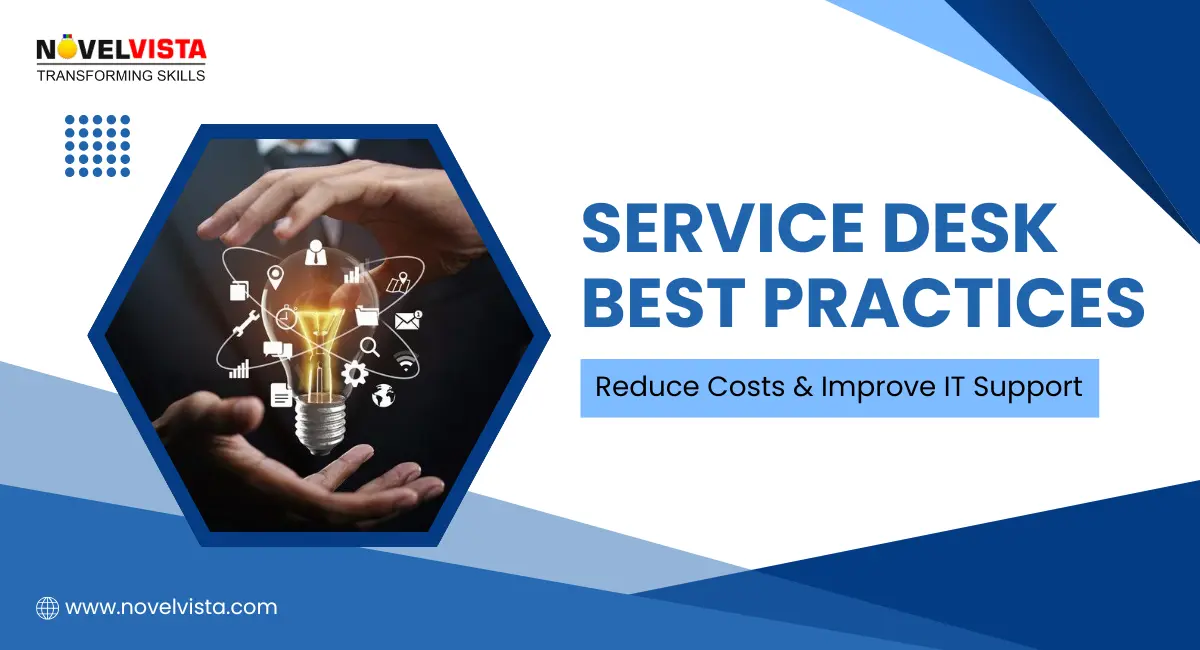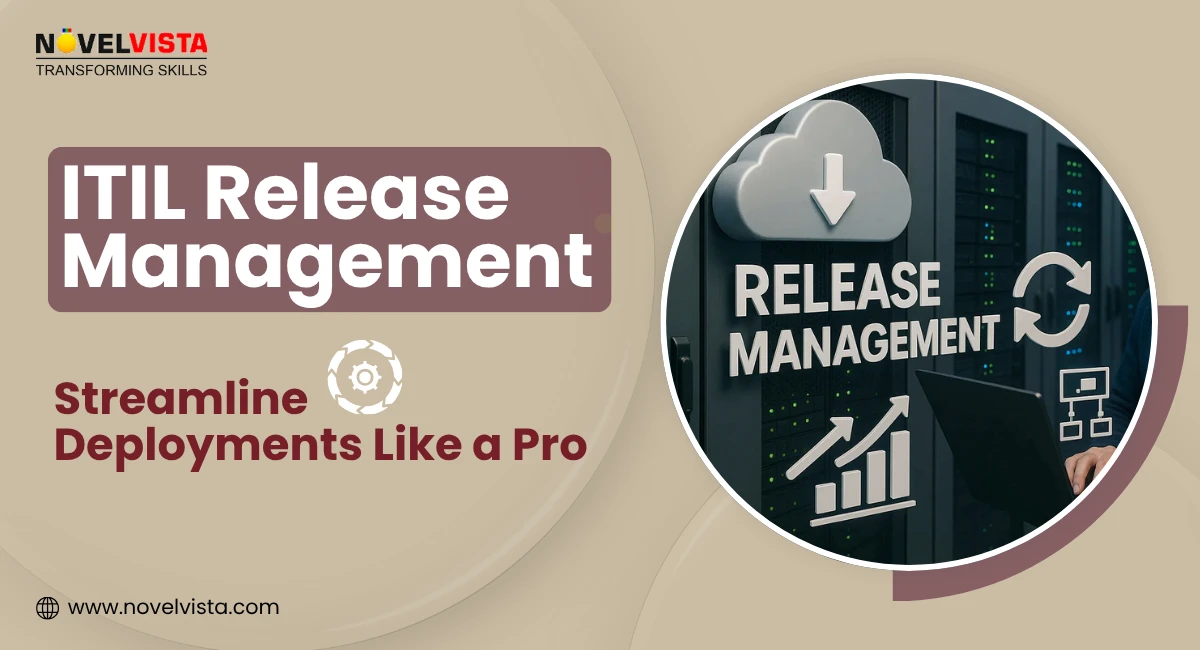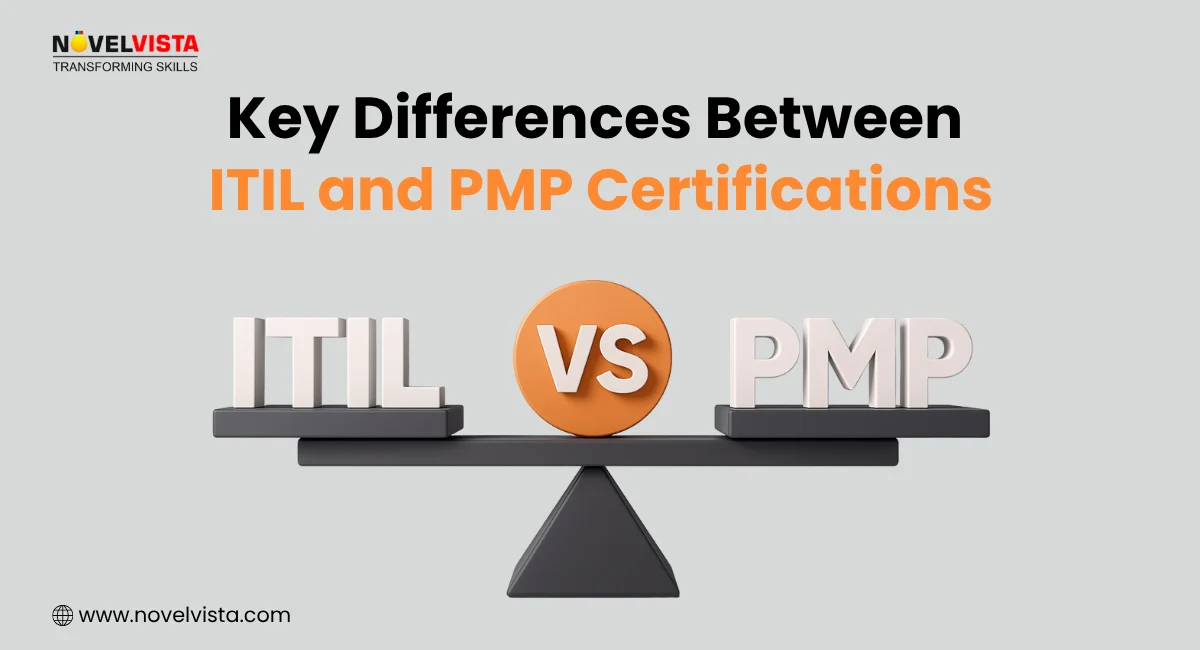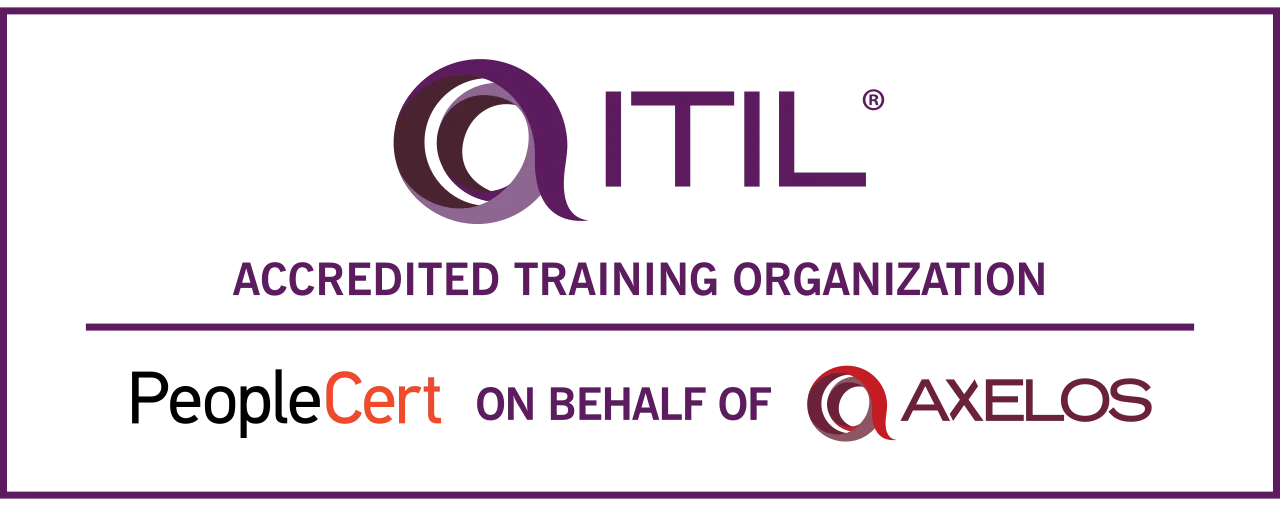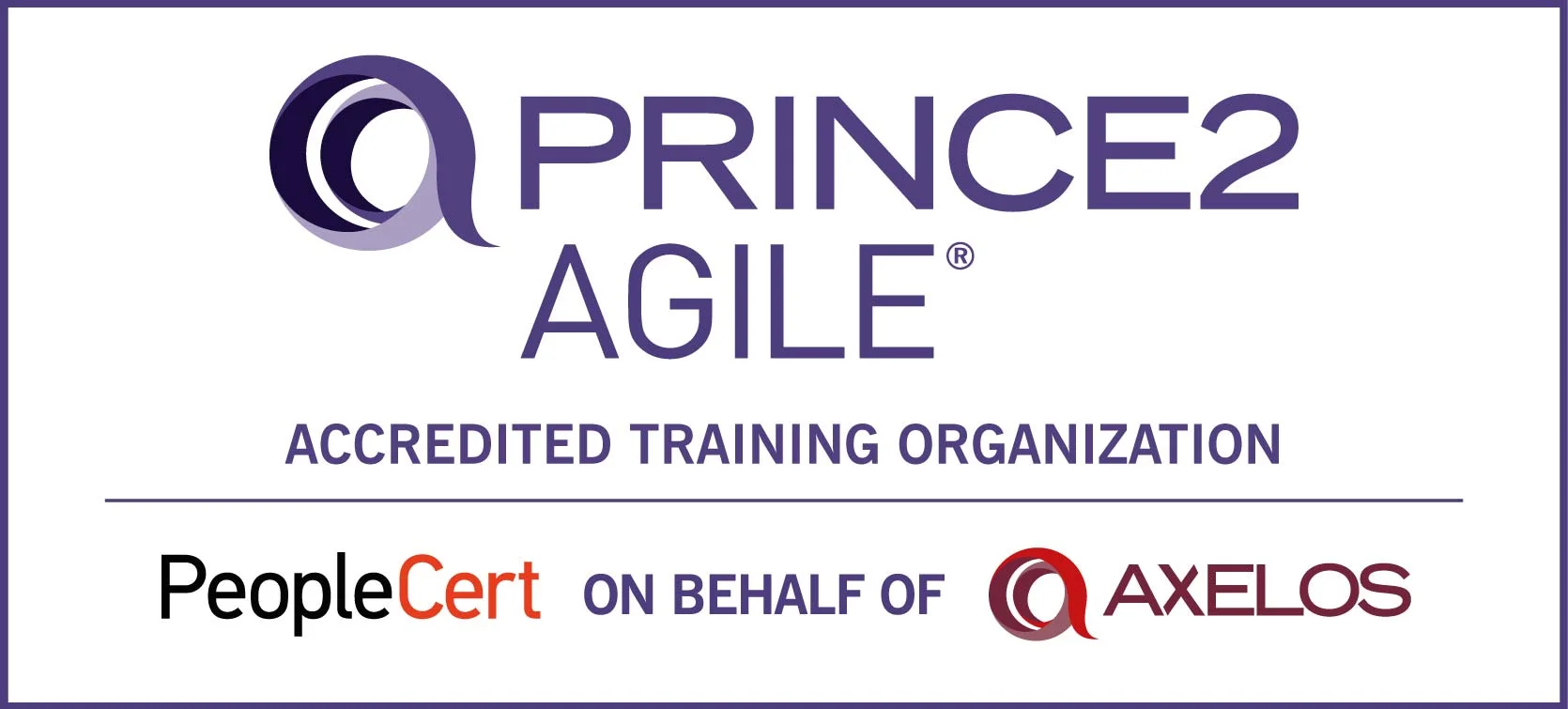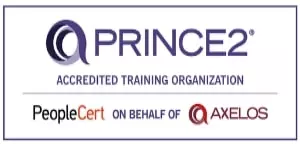Imagine this: Your IT support team spends hours resolving the same recurring issues. Tickets pile up. Response time drags. And worse — your most experienced employees hold critical know-how in their heads, not your system.
Now imagine the opposite — a setup where every solution, lesson learned, and technical fix is instantly available to anyone who needs it. New employees get up to speed faster. Users solve their own problems. Teams collaborate effortlessly.
That’s the power of ITIL Knowledge Management — turning scattered information into structured intelligence that fuels operational excellence.
Who is this for?
This guide is for IT professionals, service managers, and process owners who want to make their IT services more efficient, reduce repetitive incidents, and ensure knowledge doesn’t walk out the door with employees.
Before we jump into the practical tips, it’s important to understand what ITIL Knowledge Management really means and why it’s such a game-changer for IT organizations. So, let’s start by breaking down the fundamentals, what Knowledge Management in ITIL is, how it works, and why it’s the foundation for smarter, more reliable IT operations.
What is Knowledge Management in ITIL?
Knowledge Management in ITIL is the process of capturing, organizing, and sharing information so it’s accessible to the right people at the right time. Its ultimate goal? To improve decision-making and efficiency across the IT service lifecycle.
In simpler terms, it’s about making sure your team knows what it knows.
According to the ITIL framework, knowledge management is not just about storing documents; it’s about creating value from information. It ensures every incident, change, or problem record contributes to a growing knowledge base, preventing the same mistakes from happening twice.
A robust ITIL Knowledge Management process supports:
- Faster incident resolution: Reusing proven solutions
- Reduced training time: New staff learn from curated knowledge
- Higher service quality: Consistent, data-backed decisions
- Customer satisfaction: Self-service and faster response
Think of it as your IT organization’s “collective memory.” Without it, you’re destined to repeat the same errors, again and again.
The ITIL Knowledge Management Process Explained
The ITIL Knowledge Management process consists of four key stages:
- Knowledge Capture: Collecting data from incidents, service requests, project notes, and lessons learned.
- Knowledge Structuring: Categorizing and formatting the information so it’s easy to find and use.
- Knowledge Sharing: Distributing knowledge through portals, wikis, or service desk tools.
- Knowledge Maintenance: Reviewing and updating knowledge articles to keep them relevant.
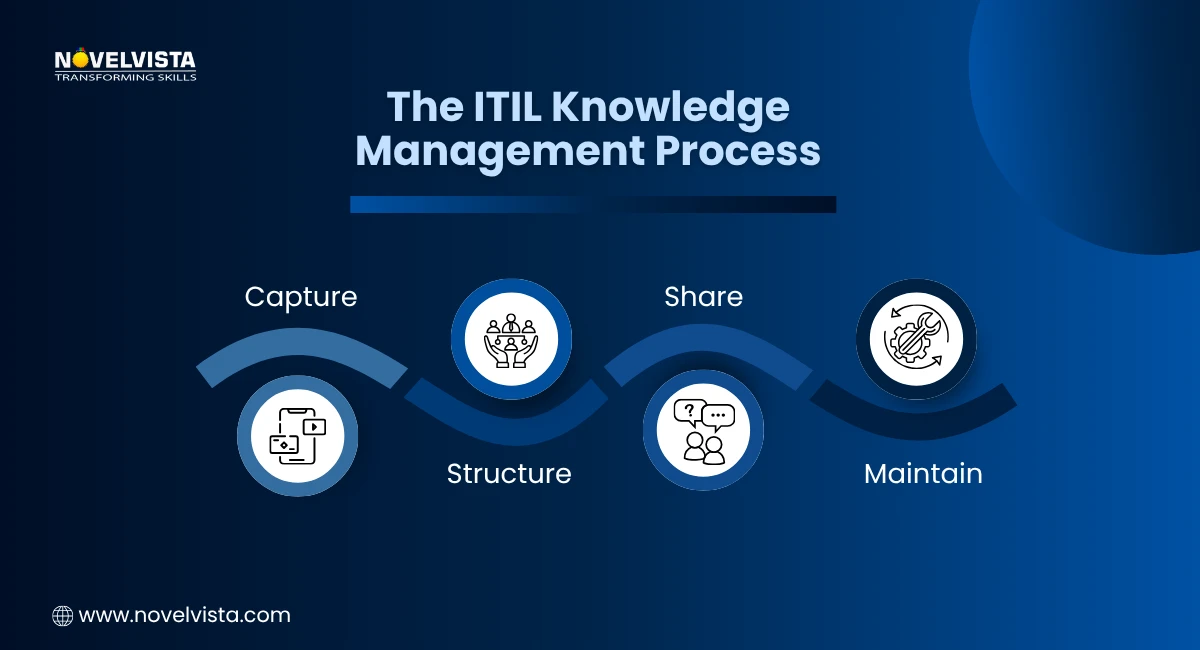
This process ensures that every bit of experience is recorded and transformed into actionable insight — a hallmark of mature IT service management.
Want to see which tools can make your ITIL processes more efficient? Check out our detailed guide —20+ ITIL Software: ITIL Tools for Efficient ITSM
Ten Tips for Effective ITIL Knowledge Management
Now that you understand what Knowledge Management is in ITIL, let’s explore ten actionable tips to master it.
1. Start with a Knowledge Management Strategy
Before diving into tools, define your Knowledge Management ITIL strategy. Identify goals — do you want to reduce ticket volumes, improve first-call resolution, or enhance onboarding? A clear purpose aligns the ITIL Knowledge Management process with business outcomes, ensuring every effort has measurable impact.
2. Create a Central Knowledge Base
A common mistake teams make is scattering information across emails, chats, and spreadsheets. Build a central knowledge repository integrated with your ITSM tool. This acts as the single source of truth, supporting ITIL Knowledge Management best practices like version control, role-based access, and audit trails.
3. Focus on Quality Over Quantity
More content doesn’t mean better knowledge. Focus on accuracy, clarity, and relevance. Follow a “create once, use often” principle — each article should be trustworthy enough to reuse without verification. Quality is the backbone of Knowledge Management in ITIL, because unreliable data leads to poor decisions and frustrated users.
4. Make Knowledge Capture Part of Daily Work
Integrate knowledge sharing into routine IT operations. For example, when an incident is resolved, make it mandatory to document the fix. Automation tools can also prompt analysts to create a knowledge article before closing a ticket — aligning everyday activities with the ITIL Knowledge Management process.
5. Empower and Reward Knowledge Contributors
People are more likely to share knowledge when it’s recognized. Reward contributors — through gamification, recognition programs, or performance KPIs. This creates a culture of collaboration, which is at the heart of ITIL Knowledge Management best practices.
6. Use the KCS (Knowledge-Centered Service) Model
The KCS methodology complements Knowledge Management ITIL principles perfectly. It integrates knowledge creation directly into service delivery workflows. Instead of documenting solutions after the fact, knowledge is created and validated during real-time issue resolution — improving both speed and accuracy.
7. Make Knowledge Easily Searchable
A knowledge base is only useful if people can find what they need. Use metadata, categories, and tags aligned with ITIL terminology. Good knowledge findability reduces repeat work and helps achieve one of the main goals of ITIL Knowledge Management — faster access to actionable insights.
8. Keep Knowledge Up-to-Date
Outdated information can be worse than no information at all. Assign ownership for each knowledge article, set review cycles, and track content expiry dates. Regular audits ensure your ITIL Knowledge Management process stays clean, relevant, and reliable.
9. Integrate Knowledge with Self-Service
Empower end-users with access to curated knowledge articles through a self-service portal. This approach not only deflects repetitive tickets but also enhances user satisfaction — one of the key outcomes of Knowledge Management in ITIL.
10. Measure and Improve Continuously
You can’t manage what you don’t measure. Track KPIs like knowledge usage rate, article feedback scores, and ticket deflection percentage. These insights help refine your Knowledge Management ITIL strategy, ensuring continuous improvement aligned with ITIL’s service excellence philosophy.
Measuring knowledge success is only part of the bigger ITSM picture. To dive deeper into how top organizations track service quality and performance, read ITIL Metrics and KPIs: Measuring Service Quality and Performance Effectively— a complete guide to turning ITIL metrics into actionable insights.
Download: ITIL Knowledge Flow Handbook
Transform scattered knowledge into seamless teamwork.
Get your free ITIL Knowledge Flow Handbook to streamline support, speed up resolutions, and boost efficiency.
Bringing It All Together
The success of ITIL Knowledge Management lies not in the tools, but in the mindset. When knowledge becomes a shared responsibility — not just an afterthought — organizations unlock speed, consistency, and innovation.
By applying these ten tips, you transform your knowledge base from a static library into a dynamic engine of efficiency — one that scales expertise across your IT ecosystem.
As the ITIL framework reminds us:
Knowledge is power — but only when it’s shared.
So, start today. Audit your current process. Identify gaps. Build a strategy. Because in the world of IT service management, Knowledge Management ITIL isn’t just a best practice — it’s a competitive advantage.
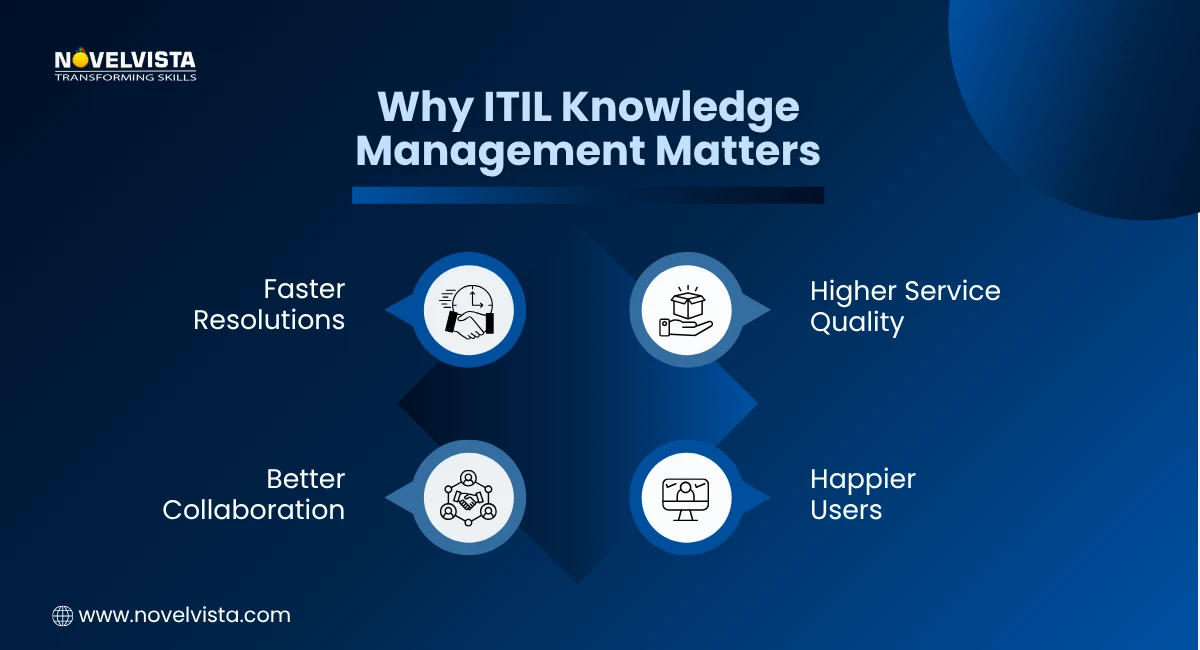
Conclusion: The Future of Knowledge Management ITIL
As IT environments become more complex, ITIL Knowledge Management will play an even greater role in ensuring agility and resilience. It bridges people, processes, and technology, enabling faster decisions and smarter service delivery.
By adopting these ten tips and aligning them with ITIL Knowledge Management best practices, you’ll create a culture where knowledge flows freely — empowering teams and delighting users.
So whether you’re an ITIL practitioner, service desk manager, or CIO, remember: Knowledge is your most renewable asset. Use it wisely, share it widely, and manage it intelligently.
Ready to strengthen your IT service management foundation?
Join NovelVista’s ITIL® 4 Foundation Certification Training and gain a deep understanding of ITIL principles, service value systems, and best practices — including how Knowledge Management fits into the bigger ITIL framework.
Designed for IT professionals, service managers, and process owners, this course helps you streamline IT operations, enhance collaboration, and deliver consistent business value.
Start your ITIL 4 journey today and build the foundation for smarter, knowledge-driven IT excellence!
Frequently Asked Questions
Author Details

Mr.Vikas Sharma
Principal Consultant
I am an Accredited ITIL, ITIL 4, ITIL 4 DITS, ITIL® 4 Strategic Leader, Certified SAFe Practice Consultant , SIAM Professional, PRINCE2 AGILE, Six Sigma Black Belt Trainer with more than 20 years of Industry experience. Working as SIAM consultant managing end-to-end accountability for the performance and delivery of IT services to the users and coordinating delivery, integration, and interoperability across multiple services and suppliers. Trained more than 10000+ participants under various ITSM, Agile & Project Management frameworks like ITIL, SAFe, SIAM, VeriSM, and PRINCE2, Scrum, DevOps, Cloud, etc.
Course Related To This blog
ITIL4 Specialist Monitor Support and Fulfil Certification
ITIL4 Specialist Acquiring & Managing Cloud Services
ITIL® 4 Strategic Leader Digital And IT Strategy (DITS)
ITIL® 4 Specialist Drive Stakeholder Value
ITIL® 4 Specialist High Velocity IT
ITIL® 4 Strategist Direct, Plan & Improve
ITIL® 4 Specialist Create Deliver & Support
ITIL® 4 Foundation Certification
Confused About Certification?
Get Free Consultation Call



